Bad News: Good News?
This piece has been prepared as a result of many conversations with friends, relatives, and acquaintances from across the world. My wife and I have children living from as far as New Zealand, Australia,, Singapore, the Philippines, relatives in the United States; and friends in Sweden, Norway, Finland, France, Germany, Ireland and Great Britain.
Since the US election, several of them have stopped watching the news……!
Bad News
Conflicts rise across the world.
The proportion of the world engulfed in conflict has grown by 65%, according to a new report. According to the latest Conflict intensity Index, 4.6% of the World’s landmass is now affected by conflict compared with 2.8% in 2021.
International news is filled with horror stories about Russia’s illegal attack on Ukraine, and the State of Israel’s massive response to the Hamas attack on Israel.
(On 7 October 2023, Hamas and several other Palestinian nationalist militant groups launched coordinated armed incursions from the Gaza Strip into the Gaza Envelope of southern Israel. In total, 1,139 people were killed: 695 Israeli civilians (including 38 children), 71 foreign nationals, and 373 members of the security forces.)
The Israeli response has been horrific. According to an October 2, 2024 letter to President Biden from a group of U.S. physicians, 62,413 people in Gaza have died of starvation. One year later, Israel has killed at least 41,870 people in Gaza, though the actual figure is presumed much higher.

Gaza
Can we stop things falling apart? 2024 begins with wars burning in Gaza, Sudan and Ukraine and peacemaking in crisis. Worldwide, diplomatic efforts to end fighting are failing. More leaders are pursuing their ends militarily. More believe they can get away with it.
War has been on the rise since about 2012, after a decline in the 1990s and early 2000s. First came conflicts in Libya, Syria and Yemen, triggered by the 2011 Arab uprisings. Libya’s instability spilled south, helping set off a protracted crisis in the Sahel region. A fresh wave of major combat followed: the 2020 Azerbaijani-Armenian war over the Nagorno-Karabakh enclave, horrific fighting in Ethiopia’s northern Tigray region that began weeks later, the conflict prompted by the Myanmar army’s 2021 power grab and Russia’s 2022 assault on Ukraine. Add to those 2023’s devastation in Sudan and Gaza. Around the globe, more people are dying in fighting, being forced from their homes or in need of life-saving aid than in decades.
On some battlefields peacemaking is non-existent or going nowhere. The Myanmar junta and the officers who have seized power in the Sahel are bent on crushing rivals. In Sudan, perhaps today’s worst war in sheer numbers of people killed and displaced, U.S.- and Saudi-led diplomatic efforts were muddled and half-hearted for months.
Russian President Vladimir Putin, banking on dwindling Western support for Kyiv, seeks to force Ukraine to surrender and demilitarize – conditions that are understandably unpalatable for Ukrainians. In all these places, diplomacy, such as it is, has been about managing the fallout: negotiating humanitarian access or prisoner exchanges, or striking deals such as the one that got Ukrainian grain onto global markets via the Black Sea. These efforts, while vital, are no substitute for political talks.
Sudan
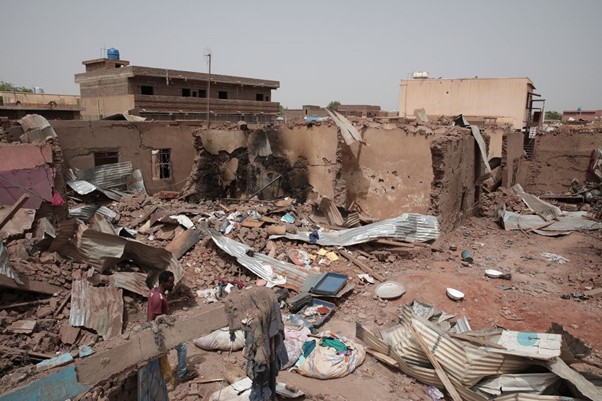
Sudan
On the evening of 28/11 the BBC world service broadcast a programme about the conflict and its effects in Sudan.
“As the civil war enters its second year, Sudan’s two warring factions remain locked in a deadly power struggle. Since the conflict began on April 15, 2023, almost 15,000 people have been killed, and more than 8.2 million have been displaced, giving rise to the worst displacement crisis in the world. Nearly 2 million displaced Sudanese have fled to unstable areas in Chad, Ethiopia, and South Sudan, overrunning refugee camps and prompting concerns that Sudanese refugees could soon attempt to enter Europe. The UN continues to plead for more support as more than 25 million need humanitarian assistance, and deteriorating food security risks are triggering the “world’s largest hunger crisis.” Meanwhile, mediation efforts have failed to produce results as the leaders of the Sudanese Armed Forces (SAF) and Rapid Support Forces (RSF) refuse to halt their violence, and regional and international actors have taken sides in the war. As conditions further deteriorate, the World Food Programme’s Carl Skau warned, “we are running out of time.”
The Sudanese horror story is but one example of horrific human behaviour…..
Are humans set on Destroying the PLANET?
Global Warming and Climate Change

- While Earth’s climate has changed throughout its history, the current warming is happening at a rate not seen in the past 10,000 years.
- According to the Intergovernmental Panel on Climate Change (IPCC), "Since systematic scientific assessments began in the 1970s, the influence of human activity on the warming of the climate system has evolved from theory to established fact."
- Scientific information taken from natural sources (such as ice cores, rocks, and tree rings) and from modern equipment (like satellites and instruments) all show the signs of a changing climate.
- From global temperature rise to melting ice sheets, the evidence of a warming planet abounds.
Potential effects
Countries taking action to reduce emissions impose trade restrictions on countries with weaker policies, leading to trade wars and increasing economic nationalism. Global emissions remain high, and global temperatures rise by 3° C or more. Some states disappear altogether as a result of sea level rise.



Climate change is already having visible effects on the world. The Earth is warming, rainfall patterns are changing, and sea levels are rising. These changes can increase the risk of heatwaves, floods, droughts, and fires.
Plastic Waste

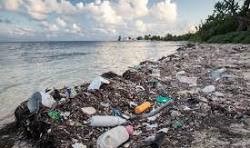
Nations fail to agree on plastic curbs as oil producers dissent.
Plastics production is forecast to jump about 60% to 736 million tons a year by 2040, according to the Organization for Economic Co-operation and Development. Recent research has shown how toxic the materials are as they accumulate in marine and terrestrial ecosystems and in human bodies.
Is there any Good News??
Signs of Hope
Scamming - Bad News and some Good News. The massive growth of Internet usage has encouraged the populace to practice online banking. This in turn has led to a massive increase in criminal online swindling. The estimated cost of this crime in the UK is £190 billion, equal to around £10,000 per family, according to a new research study.
But there is hope. An organisation called Scam Interceptors is one of several helping the populace in the UK avoid scams and claim compensation.

Working with ethical hackers, Rav Wilding is hunting down the scammers plaguing our lives – using cutting-edge tech to catch out the crooks.
The power of Women
In the USA, expect the influence of woman to rise enormously in the next decade as 57% of women are in the labor force today, only 12 percentage points lower than the share for men (69%). Since the 1990s, women have outnumbered men in both college enrolment and college completion rates. By 2013, 37% of women ages 25 to 29 had at least a bachelor’s degree, compared with 30% of men in the same age range. Today, about one-in-three professionals in the legal field are women, and so are one-in-five partners in private law firms. In addition, women account for 30% of the physician workforce in the country. All of these figures will continue to expand.




Uplifting News: UK Wind Power
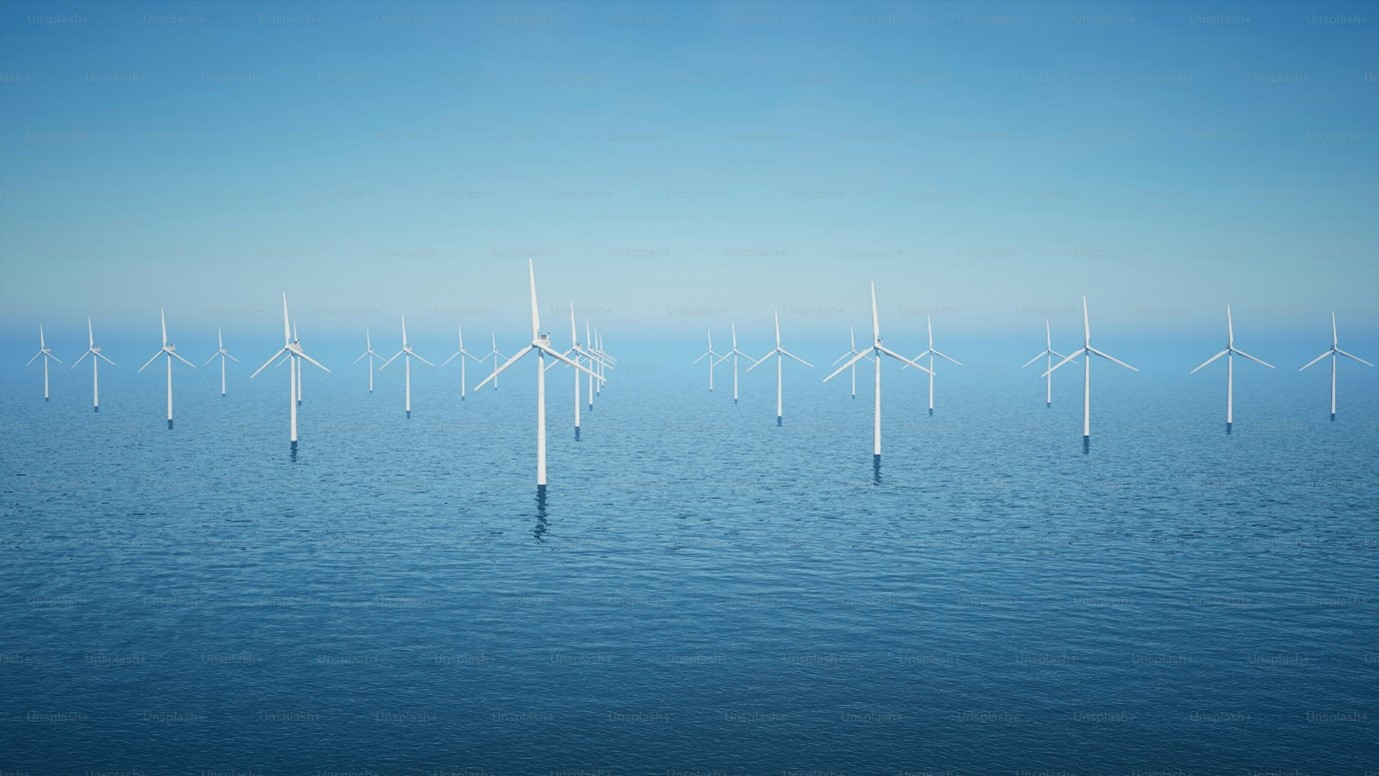
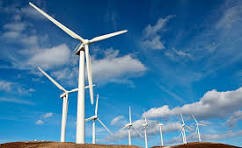
- As of 2023, the UK had over 11,000 wind turbines with a total installed capacity of 30 gigawatts (GW), split evenly between onshore and offshore installations. This makes the UK the sixth-largest wind power capacity globally.
- The UK has set ambitious targets to reduce greenhouse gas emissions and achieve net zero by 2050. Wind energy has become a significant source of renewable electricity, accounting for 22.6% of the country's electricity consumption in 2021. The UK government aims to reach 40 GW offshore wind capacity by 2030.
- The United Kingdom is witnessing remarkable growth in wind energy, emerging as a leader in the renewable energy landscape.
- EU greenhouse gas emissions fell by 8.3% in 2023, compared to 2022, reveals the latest climate action progress report by the European Commission. The report states that net greenhouse gas emissions are now 37% below 1990 levels. Over the same period, EU Gross Domestic Product (GDP) grew by 68%.
Scandinavia - Hope for the World
The Nordic Region consists of Denmark, Norway, Sweden, Finland, and Iceland, as well as the Faroe Islands, Greenland, and Åland.

The Nordic Model
What Is the Nordic Model?
The Nordic model is a term coined to capture the unique combination of free-market capitalism and social benefits that have given rise to a society that enjoys a host of top-quality services, including free education and healthcare and generous, guaranteed pension payments for retirees.
These benefits are funded by taxpayers and administered by the government for the benefit of all citizens. The citizens have a high degree of trust in their government and a history of working together to reach compromises and address societal challenges through democratic processes. Their policymakers have chosen a mixed economic system that reduces the gap between the rich and the poor through redistributive taxation and a robust public sector while preserving the benefits of capitalism.
The Nordic Region consists of Denmark, Norway, Sweden, Finland, and Iceland, as well as the Faroe Islands, Greenland, and Åland.
Did you know that the Nordic Region has one of the largest economies in the world? Or that the Nordic countries have enjoyed free movement of labour for more than 60 years? Here are 10 facts about the Nordic Region and Nordic co-operation
- We have one of the oldest and most wide-ranging forms of regional political collaboration, and we aspire to be the most sustainable and integrated region in the world.
- We are among the richest in the world in terms of per capita GDP and have successfully adapted our welfare model to the global economy.
- We have an open labour market. For the last six decades, our people have enjoyed the freedom to work anywhere in the region.
- We accept global responsibility. We are committed to international engagement, working with a wide range of international organisations and with our neighbours, e.g. on combating human trafficking and protecting the environment in the Baltic Sea and in the Arctic.
- We prioritise opportunities for children and young people. For example, we fund their studies at higher education institutions throughout the Nordic Region.
- We have thriving architecture, film, food, fashion and music scenes that are of great interest to the whole of the world. We want to enhance our visibility and to support Nordic culture both at home and elsewhere, e.g. via the Nordic Council prizes.
- We have fantastic and varied natural scenery, habitats and resources. We are good at protecting and exploiting these resources, e.g. for sustainable energy. The Nordic Region is innovative. We work together to find new, smart solutions for the bioeconomy.
- We have one of the most highly educated populations in the world. We are strongly committed to working together on research both within the region and with international partners, e.g. on combating the consequences of climate change.
- The Nordic Region is one of the most equal regions in the world, and gender equality has been made a major contribution to our economic success. The proportion of women in work is among the highest anywhere, and Nordic men hold the record in paternity leave.
- We top many international rankings. We lead the world in transparency, trust, freedom of speech, the environment and happiness.
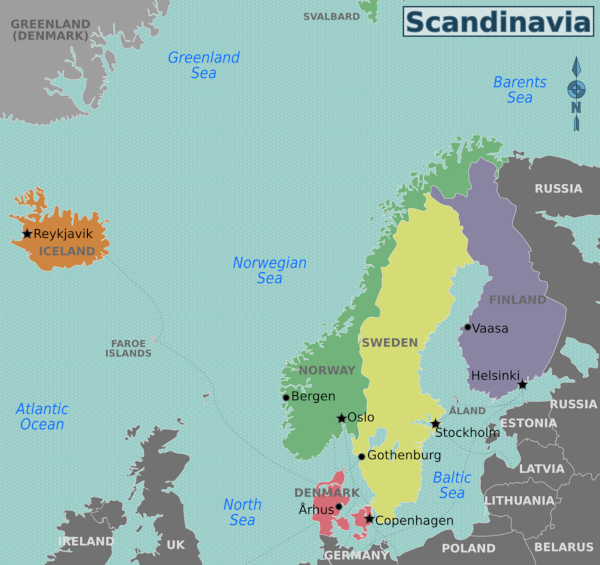
How’s Life? National wellbeing.
Finland

Good education and skills are important requisites for finding a job. In Finland, 91% of adults aged 25-64 have completed upper secondary education, higher than the OECD average of 79%. However, completion varies between men and women, as 89% of men have successfully completed high school compared with 94% of women. In terms of the quality of the education system, the average student scored 516 in reading literacy, maths and science in the OECD's Programme for International Student Assessment (PISA). This score is higher than the OECD average of 488. On average in Finland, girls outperformed boys by 27 points, well above the average OECD gap of Finland performs well in many dimensions of well-being relative to other countries in balance, environmental quality, social connections, safety and life satisfaction. These assessments are based on available selected data.
Money, while it cannot buy happiness, is an important means to achieving higher living standards. In Finland, the average household net-adjusted disposable income per capita is USD 33 471 a year, more than the OECD average of USD 30 490 a year.
In terms of employment, about 72% of people aged 15 to 64 in Finland have a paid job, above the OECD employment average of 66%. Some 74% of men are in paid work, compared with 71% of women.
In terms of health, life expectancy at birth in Finland is around 82 years, one year higher than the OECD average of 81 years. Life expectancy for women is 85 years, compared with 79 for men. The level of atmospheric PM2.5 – tiny air pollutant particles small enough to enter and cause damage to the lungs – is 5.5 micrograms per cubic meter, below the OECD average of 14 micrograms per cubic meter. In Finland, 97% of people say they are satisfied with the quality of their water, much higher than the OECD average of 84%.
Concerning the public sphere, there is a strong sense of community and moderate levels of civic participation in Finland, where 96% of people believe that they know someone they could rely on in time of need, more than the OECD average of 91%. Voter turnout, a measure of citizens' participation in the political process, was 69% during the Better Life Index. Finland outperforms the average in education. In recent elections; voter turnout for the top 20% of the population is an estimated 78% and for the bottom 20% it is an estimated 64%.
When asked to rate their general satisfaction with life on a scale from 0 to 10, Finns gave it a 7.9 grade on average, much higher than the OECD average of 6.7.
According to the World Inequality Database, the highest-paid tenth of people in Finland take home a third of all income (33%). That contrasts with the same group taking 36% in the UK and 46% in the US. These differences may not appear great, but they have a huge effect on overall happiness because so much less is left for the rest in the more unequal countries – and the rich become more fearful. When a small number of people become much richer, this is an understandable fear.
The Top 7 Happiest Countries in the World
Finland ranks as the world's happiest country based on the 2021 report, with a score of 7.842 out of a total possible score of 10. The report writers credited the citizens of Finland's strong feelings of communal support and mutual trust with not only helping secure the #1 ranking, but (more importantly) helping the country as a whole navigate the COVID-19 pandemic. Additionally, Finlanders felt strongly that they were free to make their own choices, and showed minimal suspicion of government corruption. Both of these factors are strong contributors to overall happiness.
The second-happiest country in the world is Denmark, which scores 7.620. Denmark's values for each of the six variables are quite comparable to those of Finland. In fact, Denmark even outscored the leader in multiple categories, including GDP per capita, generosity, and perceived lack of corruption, demonstrating that it may claim the top spot sometime in the near future.
As the third-happiest country in the world, Switzerland scored a total of 7.571 out of 10. In general, the Swiss are very healthy, with one of the world's lowest obesity rates and a long life expectancy. The Swiss also have a very high median salary, about 75% higher than that of the United States, and the highest GDP per capita in the top seven. Additionally, there is a strong sense of community in Switzerland and a firm belief that it is a safe and clean country—which is statistically true. Along with Iceland and Denmark, Switzerland is one of the world's safest countries.
Iceland ranks as 2021's fourth-happiest country in the entire world, with a total score of 7.554. Of the top seven happiest countries around the globe, Iceland has the highest feeling of social support (higher even than Finland, Norway, and Denmark, which all tied for second place). Iceland also had the second-highest generosity score in the top seven, though it's worth noting that it ranked only 11th worldwide.
The citizens of sixth-place Norway (7.392) feel they are being well cared for by their government thanks to universal healthcare and free college tuition. Norwegians also enjoy a healthy work-life balance, working an average of 38 hours per week vs. 41.5. hours per week in the United States. Additionally, Norway has a low crime rate and a strong sense of community among its citizens—a quality it shares with many of the top seven.
Seventh-place Sweden (7.363) ranks high, if not quite highest, in virtually every category measured. For example: Sweden has a higher lack of corruption score than all but four countries worldwide (two of which are Finland and Denmark), the fourteenth-highest GDP per capita of all 149 countries measured, and the fourth-highest life expectancy in the top seven.
Last, but not least.
Each of the people I spoke with mentioned with some anxiety the election of Donald Trump as president of the USA. Some of Trump’s initial appointments into senior political positions have served to increase that anxiety.
But for “Having their Cake” website we have decided to wait until Trump’s early decisions and programmes as President reveal the impact on the USA and wider world.




